

















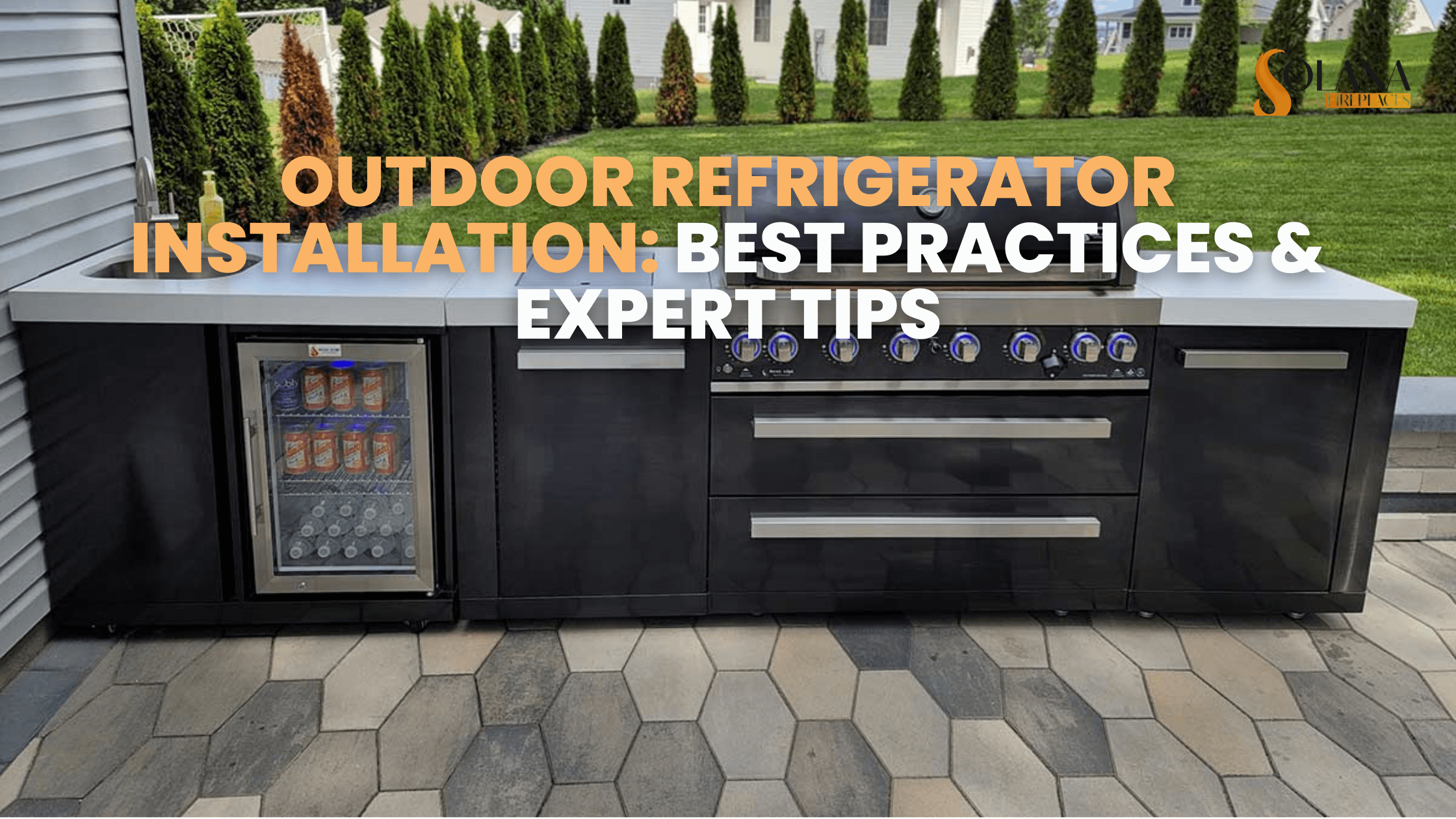
Published on: 6/18/2025
Proper outdoor refrigerator installation enhances any outdoor kitchen, keeping drinks cold, ingredients fresh, and essentials within reach while you grill.
To ensure efficiency, safety, and durability, this guide covers choosing between a built-in vs. freestanding fridge, ideal outdoor kitchen fridge placement, ventilation requirements, and a secure power supply for outdoor fridge use.
Plus, we’ll share tips on weatherproofing outdoor appliances for lasting performance.

An outdoor refrigerator eliminates the hassle of running back and forth to your indoor kitchen, making outdoor meal prep more convenient. If you’re storing marinated meats, condiments, beverages, or fresh sides, having a fridge near your grill enhances the overall cooking experience.
However, outdoor environments expose appliances to more extreme conditions than indoor setups.
That’s why careful outdoor refrigerator installation is essential—it helps maximize performance and longevity while preventing potential damage caused by temperature fluctuations, humidity, and other outdoor elements.
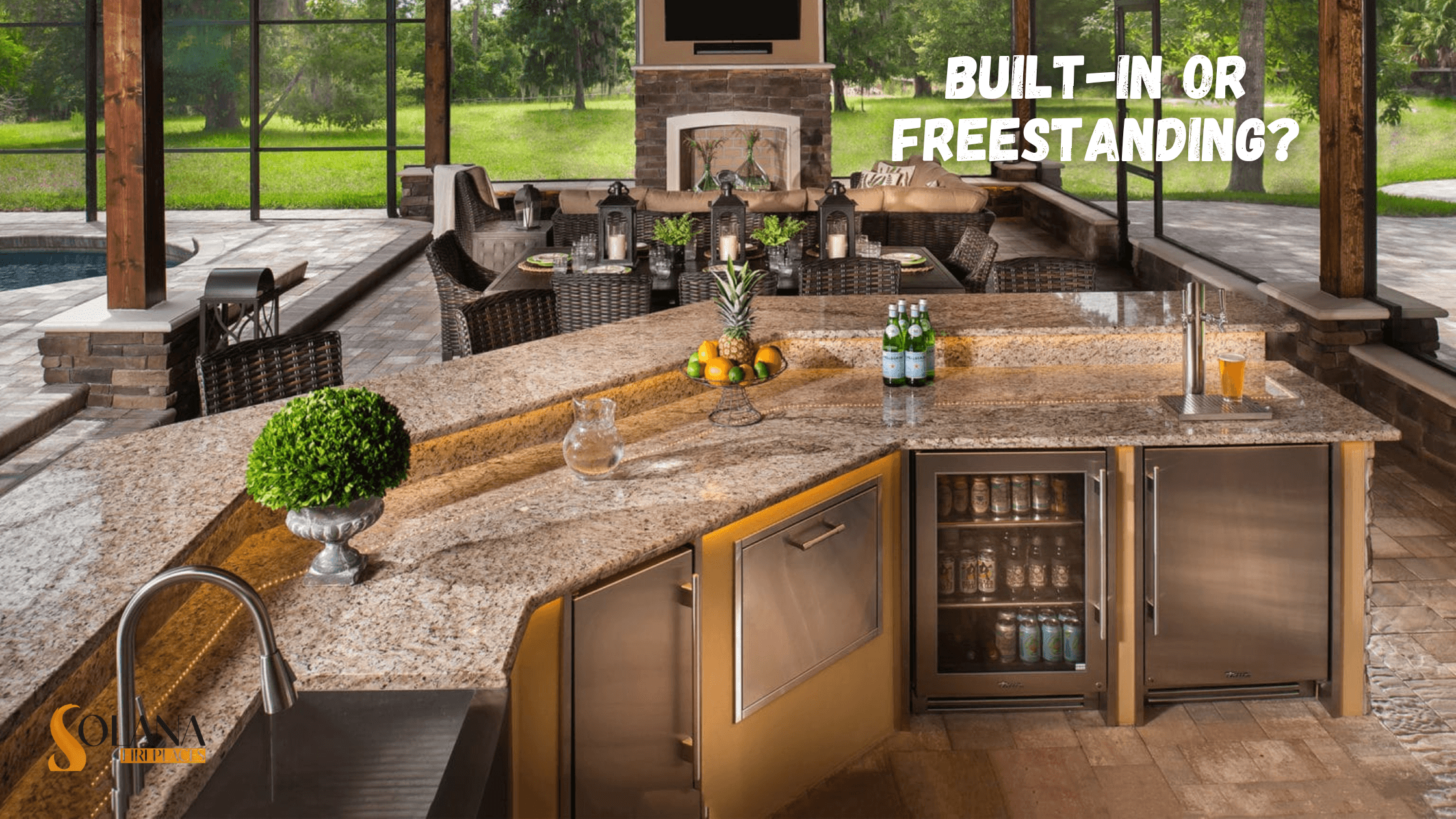
Before purchasing your outdoor refrigerator, it’s important to decide if you need a built-in or freestanding model. Each option comes with its own advantages and specific setup considerations.
A. Built-in Outdoor Refrigerators
A built-in fridge is designed to fit seamlessly into an outdoor kitchen or BBQ island. These units are specifically built for enclosed spaces and come with ventilation requirements that direct airflow through the front of the appliance.
Pros:
Cons:
B. Freestanding Outdoor Refrigerators
A freestanding outdoor fridge is a more flexible option that can be placed anywhere, as long as it has proper airflow and protection from outdoor conditions.
Pros:
Cons:
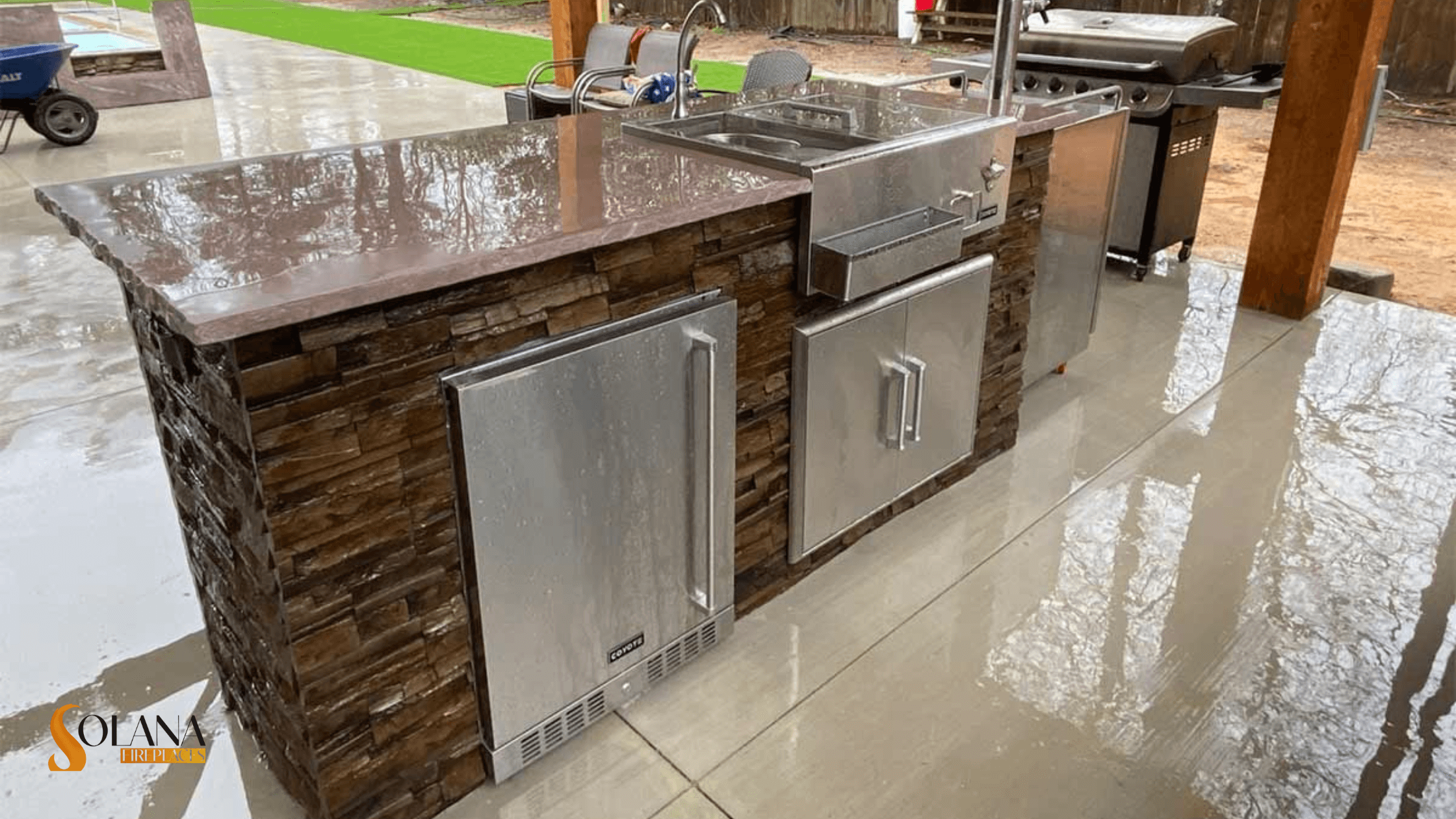
Selecting the right outdoor kitchen fridge placement is key to convenience, efficiency, and longevity. Here’s what to consider when determining the best location:
1. Keep It Close to Your Cooking and Prep Station
The fridge should be within arm’s reach of your grilling and prep area for smooth meal preparation. However, be sure to place it a few feet away from direct heat sources like BBQ grills or pizza ovens to prevent overheating.
2. Allow for Proper Ventilation
A well-ventilated fridge operates more efficiently and prevents overheating. If installing a built-in fridge, ensure there’s a ventilation panel to allow proper airflow. For freestanding models, leave at least 2 to 3 inches of space around the back and sides.
3. Avoid Direct Sunlight Exposure
Positioning your fridge in a shaded area helps extend its lifespan by preventing excessive strain on the cooling system. If possible, place it under a covered patio, pergola, or within your outdoor kitchen structure.
4. Set It on a Stable, Level Surface
A sturdy, level surface prevents unnecessary strain on the fridge’s compressor. Materials like concrete, stone, or tile are ideal to keep the appliance stable and reduce moisture exposure.
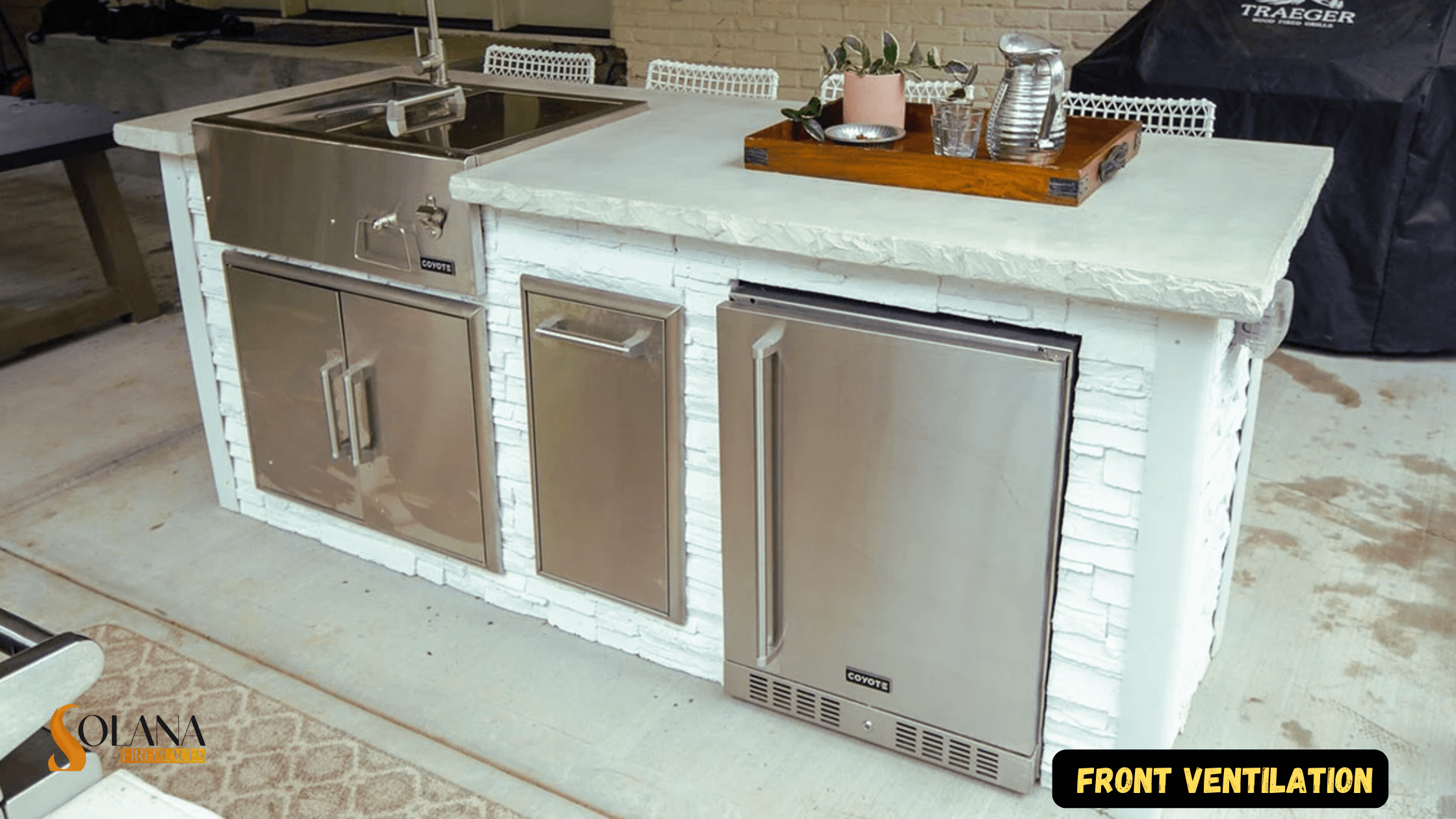
Proper ventilation requirements are crucial for maintaining an energy-efficient outdoor refrigerator. A lack of airflow can lead to overheating, higher energy consumption, and long-term damage.
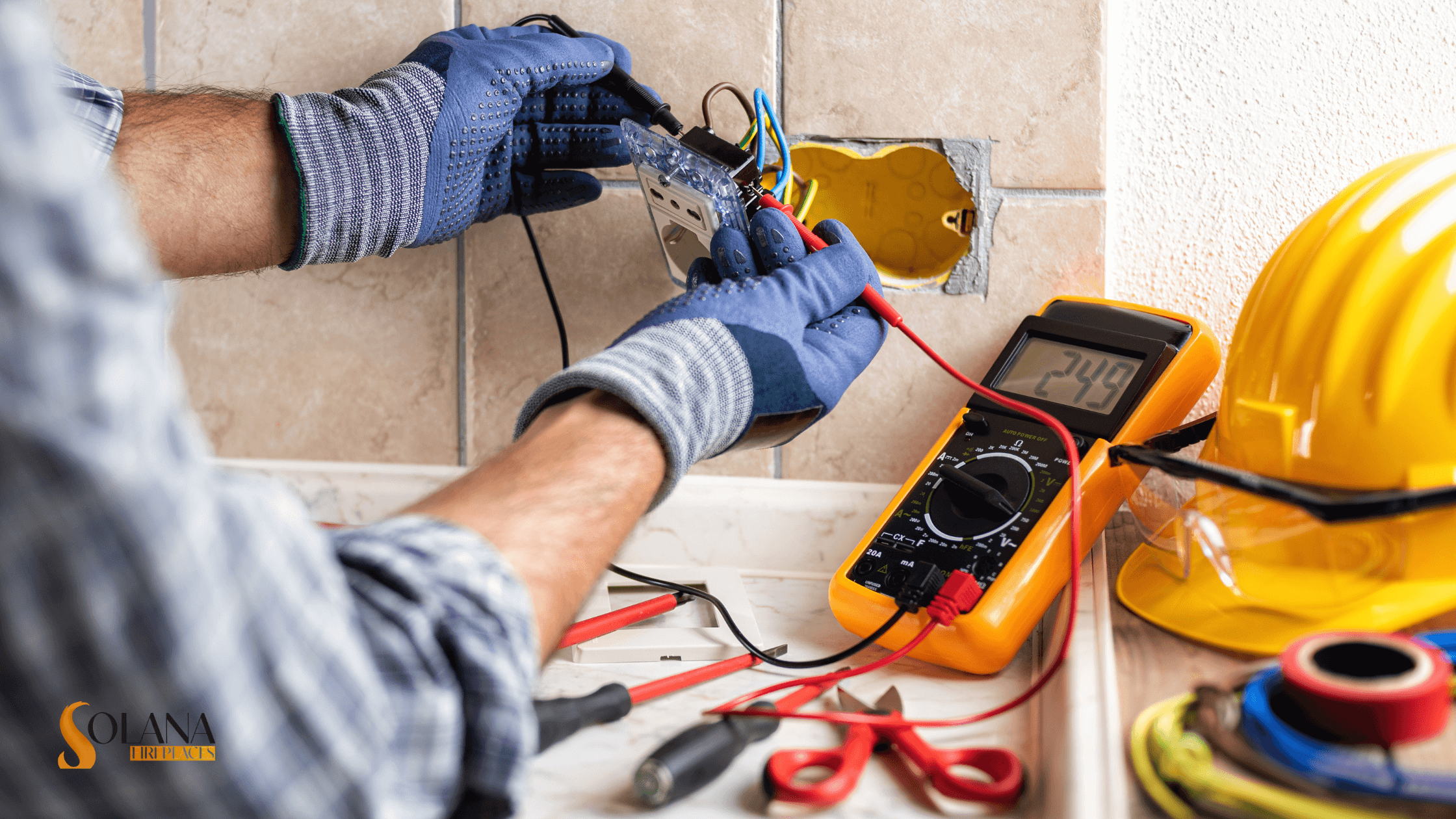
A reliable power supply for outdoor fridge operation is vital for safety and performance.
Follow these electrical guidelines for proper installation:
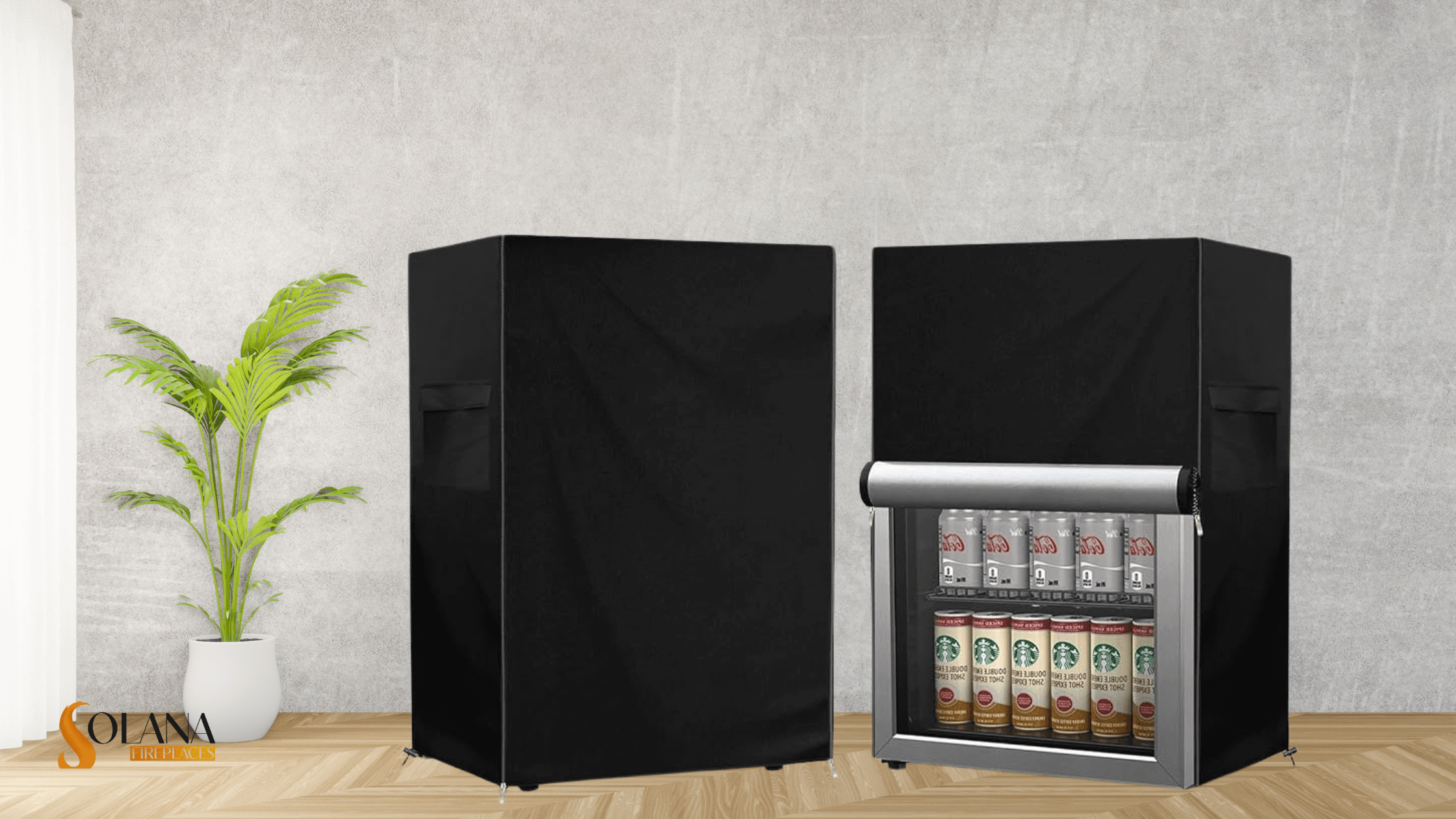
Since your outdoor refrigerator will be exposed to varying weather conditions, proper weatherproofing outdoor appliances is crucial for longevity.
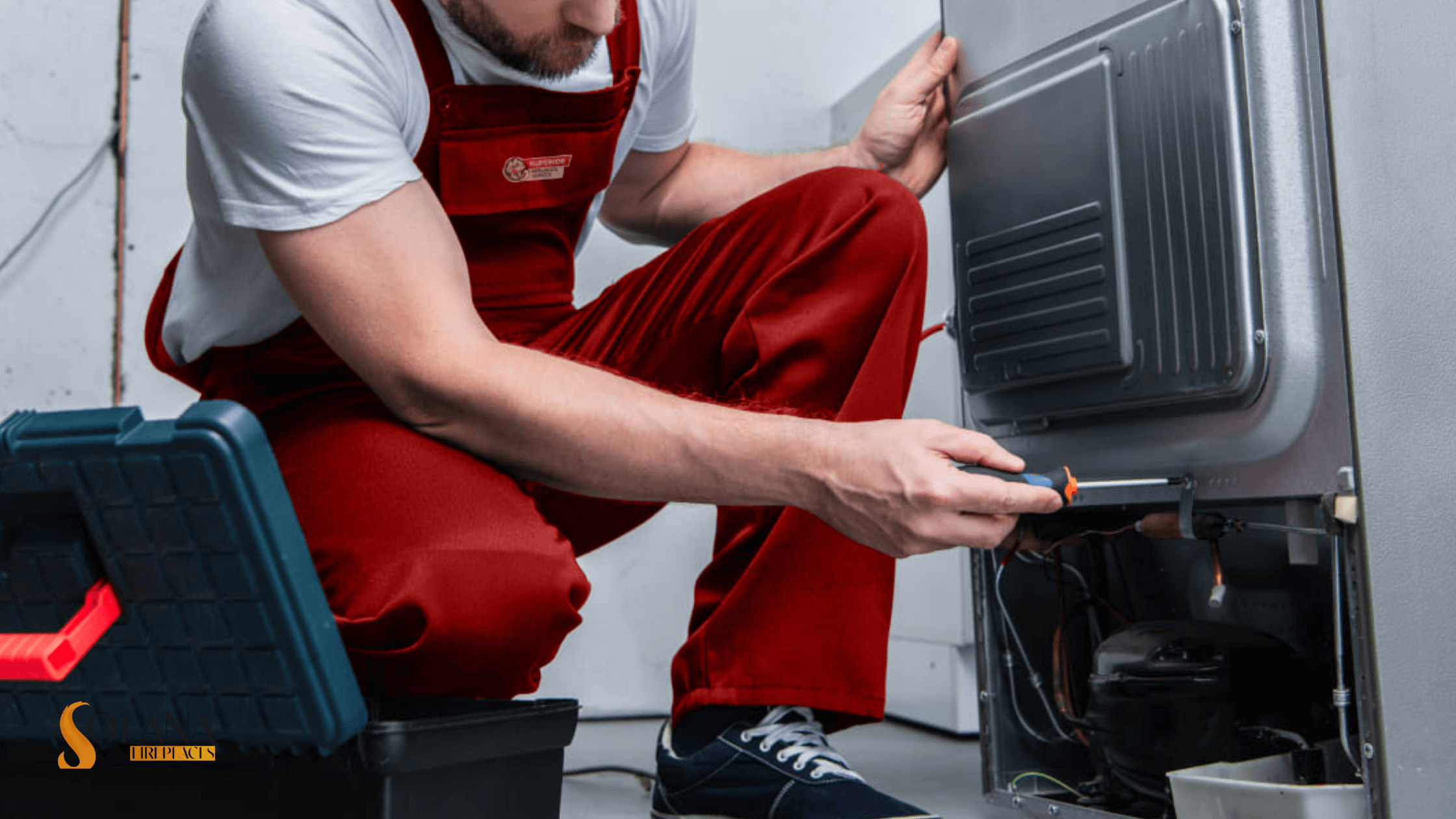
Pick a shaded, level surface near your cooking station but away from direct heat sources.
Ensure the area is stable and made from a non-porous material like concrete, stone, or tile.
Set up a GFCI outlet with weatherproof protection to safely power your fridge.
Plug in the fridge, set the temperature, and monitor its performance for the first few hours.

Routine maintenance is essential to keep your outdoor refrigerator in top shape. Clean the condenser coils, wipe down the exterior, and inspect door seals regularly to ensure peak efficiency.
For an in-depth maintenance guide, check out our detailed outdoor refrigerator care tips!
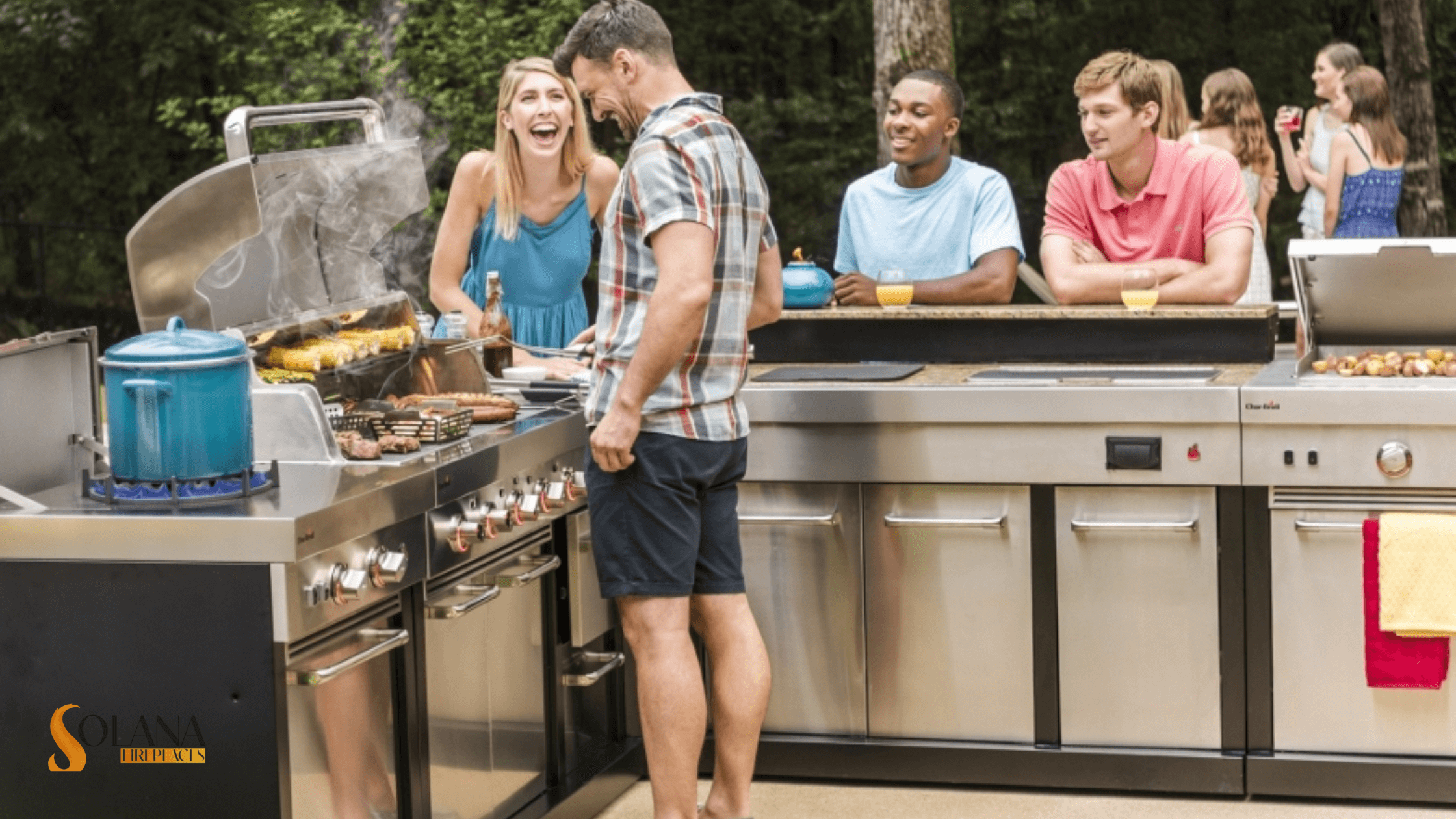
An outdoor refrigerator is a valuable addition to your outdoor kitchen, providing convenience and efficiency while you entertain. By selecting the right built-in vs. freestanding fridge, ensuring proper outdoor kitchen fridge placement, following essential ventilation requirements, and securing a safe power supply for outdoor fridge, you can enjoy a seamless setup built to last.
At Solana Fireplaces, we offer high-quality outdoor refrigerators, BBQ grills, and premium accessories to help you create the perfect outdoor cooking space. Shop our collection today or call us at (888) 575-9720 and elevate your outdoor experience!